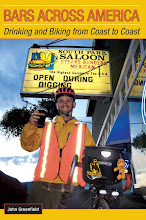
By John Greenfield
[This piece also runs in New City, www.newcity.com.]
It should be easy to travel Chicago, especially the Loop, without a car. The flat grid makes walking a breeze. We’ve got over 100 miles of bicycle lanes and more than 10,000 bike racks. CTA, Metra, taxicabs and even water taxis and pedicabs offer eco-friendly options for getting downtown and around town.
So why is the Central Business District clogged with cars that foul the air and endanger walkers and cyclists, while transit faces perpetual budget shortfalls? Answer: while the City of Chicago fails to invest in green transportation (Federal money paid for those bike lanes and racks, and the city spends a measly $3 million per year on the CTA), it continues to encourage driving, especially downtown.
Mayor Daley lifted a longtime ban on new Loop parking garages and built Millennium Park on top of a three-level garage with room for more than 2,000 cars. Recent zoning changes force developers to provide a parking spot for every housing unit. The Traffic Management Authority has changed traffic signal times to favor cars over pedestrians, and removed crosswalks on Michigan Avenue and Lake Shore Drive, making it easier to drive and harder to walk.
Instead, Chicago needs to start discouraging driving and promoting healthier modes by charging motorists a toll for the privilege of driving into the Loop, and using the cash to fund bike, ped and transit projects. Sounds crazy? This scheme, called “congestion pricing,” is nothing new.
In 2003 Mayor Ken Livingstone took a big risk by instituting a $12 congestion charge for motorists entering gridlocked central London. The policy is enforced with video cameras and drivers who don’t pay face stiff fines. At the same time the city added hundreds of buses to its fleet to make transit more appealing. Traffic flow and air quality improved significantly and bicycle use skyrocketed. The gamble paid off—Livingstone won the next election by a comfortable margin.
Hizzoner has shown that he can bulldoze Meigs Field in the middle of the night and still get reelected by a landslide, so why not take bold action on this? Slap a hefty fee on commuters and tourists who selfishly choose to drive into the Loop, or better yet the whole Central Business District between Division, Halsted, Roosevelt and the lake. Sit back and enjoy the results: a safer, greener, friendlier Chicago.












